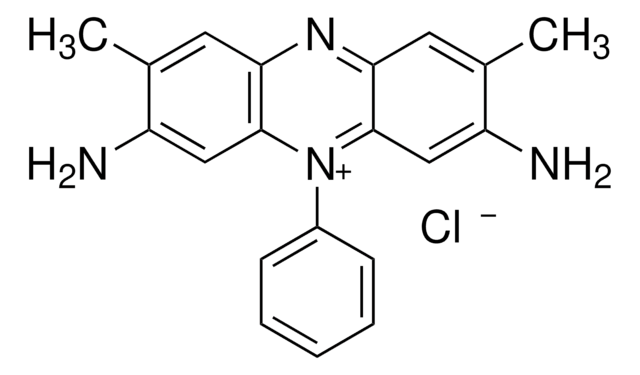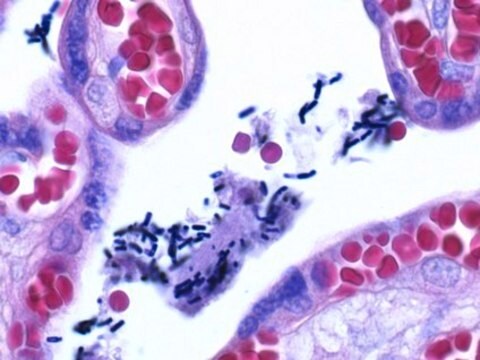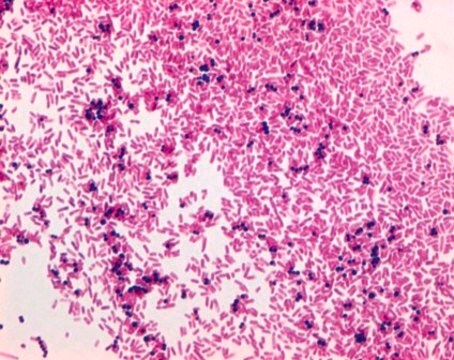94448
Gram′s crystal violet solution
for microscopy
Synonym(s):
Basic violet 3; gentian violet; hexamethyl pararosaniline; methyl violet 10B
About This Item
Recommended Products
grade
for microscopy
Quality Level
product line
BioChemika
form
liquid
shelf life
limited shelf life, expiry date on the label
technique(s)
microbe id | staining: suitable
color
purple to very dark purple
density
0.981 g/mL at 20 °C
εmax
33.8 at 585-595 nm in water
suitability
suitable for microscopy
antibiotic activity spectrum
Gram-negative bacteria
Gram-positive bacteria
application(s)
diagnostic assay manufacturing
hematology
histology
storage temp.
room temp
General description
Application
- Crystal violet is routinely used for Gram staining and its variants, staining amyloid, bacterial components, and vascular plant tissues.
- It is used in polychrome staining of epoxy resin sections, viability staining of cultured neurons, and confocal optical sectioning to analyze meiotic structures.
- It is also employed in the acridine orange-crystal violet staining of intracellular bacteria, microsporidian spores, and cytological smears.
Biochem/physiol Actions
Principle
Signal Word
Warning
Hazard Statements
Precautionary Statements
Hazard Classifications
Aquatic Chronic 3 - Carc. 2 - Eye Irrit. 2 - Flam. Liq. 3
Storage Class Code
3 - Flammable liquids
WGK
WGK 2
Flash Point(F)
93.2 °F
Flash Point(C)
34 °C
Personal Protective Equipment
Choose from one of the most recent versions:
Already Own This Product?
Find documentation for the products that you have recently purchased in the Document Library.
Customers Also Viewed
Articles
Clostridia are relatively large, gram-positive, rod-shaped bacteria that can undergo only anaerobic metabolism.
Clostridium perfringens can cause contamination in undercooked or improperly sterillized canned foods and water. Learn to detect, identify, and differentiate this pathogen.
Campylobacter grows only on complex media that have been amended with diverse essential amino acids and supplements. We offer a broad range of specific agars and broths for the detection, identification, and cultivation of Campylobacter.
For microbiologists the most fundamental stain was developed in 1884 by the Danish bacteriologist Hans Christian Gram.
Our team of scientists has experience in all areas of research including Life Science, Material Science, Chemical Synthesis, Chromatography, Analytical and many others.
Contact Technical Service











